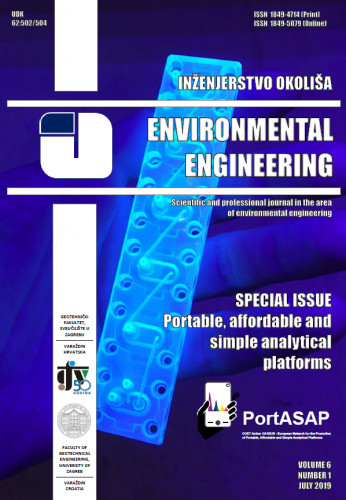The electrochemical methods are very good tool for determination of trace concentrations of various species in water samples. The analysis carried out using these methods are usually simple, fast and also the cost of the required equipment is much lower comparing to other instrumental methods. Furthermore, the electroanalytical methods are easy to automate and computerize. Among five major groups of these methods (potentiometry, voltammetry, coulometry, conductometry and dielectrometry), potentiometry and voltammetry attract the greatest attention of researchers. In this paper, experimental results of research related to development of procedures (voltammetric and potentiometric) for the determination of elements in environmental water samples were presented. Due to their common occurrence in environment and possible toxic effects on living organisms, vanadium and nitrate ions were selected for investigation. Optimization of voltammetric procedure for V(V) determination were carried out in matrix containing different surfactants and humic acids, using lead film electrode as a working electrode. Results showed that only nonionic surfactant Brij-35 did not interfere with the voltammetric signal. Other surfactants as well as humic acids reduced the signal, and possibility of their elimination with suitable resins were also investigated. Potentiometric measurements were consisted of preparation and determination of analytical properties of nitrate ion-selective electrodes with solid contact. The results showed that among three different membrane composition, the best response was achieved by membrane containing: Ni(Phen)2, THTDPCl, PVC and NPOE in the ratio of 1:2:33:64 wt. %, respectively.
Sažetak

 Inženjerstvo okoliša : scientific and professional journal in the area of environmental engineering : 6,1(2019) / glavni urednik, editor in chief Nikola Sakač.
Inženjerstvo okoliša : scientific and professional journal in the area of environmental engineering : 6,1(2019) / glavni urednik, editor in chief Nikola Sakač.